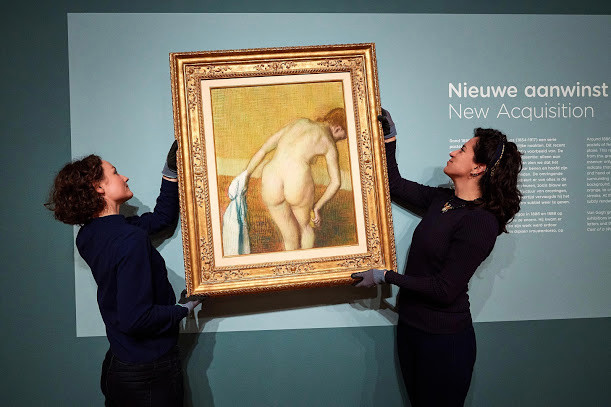[ad_1]
The Van Gogh Museum in Amsterdam, dedicated to the work of the Dutch Post-Impressionist, has made a major acquisition that will aid in contextualizing the work of Vincent Van Gogh. On Wednesday, the museum announced that a pastel work by French Impressionist Edgar Degas had entered the permanent collection, the first of its kind to enter the Dutch national collection.
Degas’s Woman Bathing (1886) is one ten pastels that he produced between 1884 and 1887 as part of a series of nudes that marked a transition in his art making, shifting from depicting public scenes of Parisian life to intimate portraits of women often in domestic spaces. Measuring about 28½ inches by 25½ inches, Woman Bathing features the model, with her back turned to the viewer, washing herself with a sponge and, like the others in the series, is notable for its focus on the subject, with little detail on its setting.
Degas exhibited a selection from the series at the eighth and final Impressionist exhibition in Paris in 1886, where it attracted both acclaim and criticism, particularly around the ungainly poses of his models. Van Gogh visited the exhibition and it was in seeing those works that he was inspired to create his own series of nude studies, which drew on Degas’s compositional innovations and were completed months later at a studio in Paris. (Van Gogh’s most famous work were created in the years after he left Paris in 1888.)
“The Van Gogh Museum has long cherished the wish to add a top-ranking Degas nude to its collection, preferably one from the period in which Van Gogh discovered the French artist’s work,” reads a statement from the museum, which also owns works by Édouard Manet, Claude Monet, and Paul Signac, as well as van Gogh’s collection of Japanese prints. “For that reason, Woman Bathing will remain on permanent display following its unveiling today.”
[ad_2]
Source link

